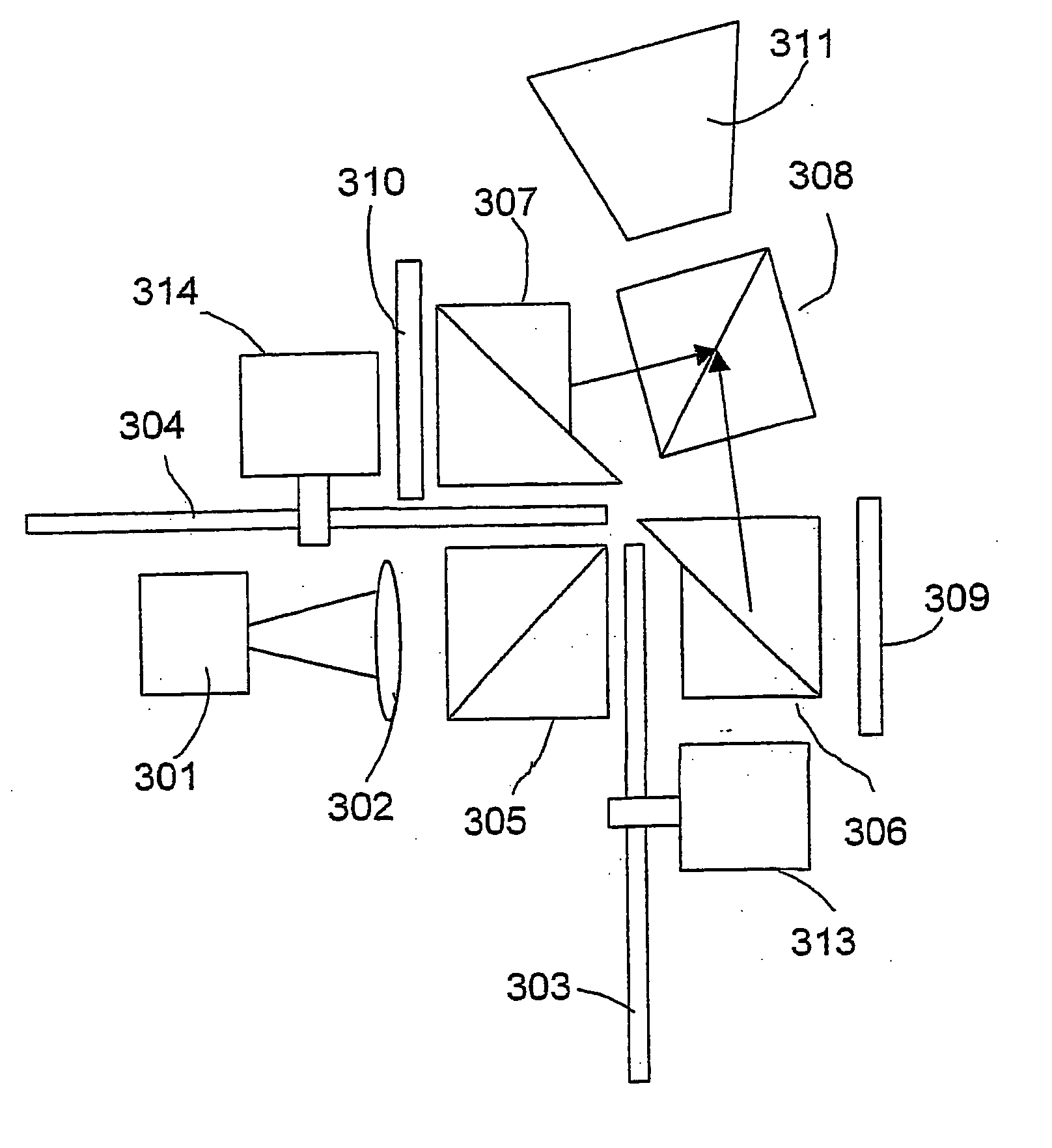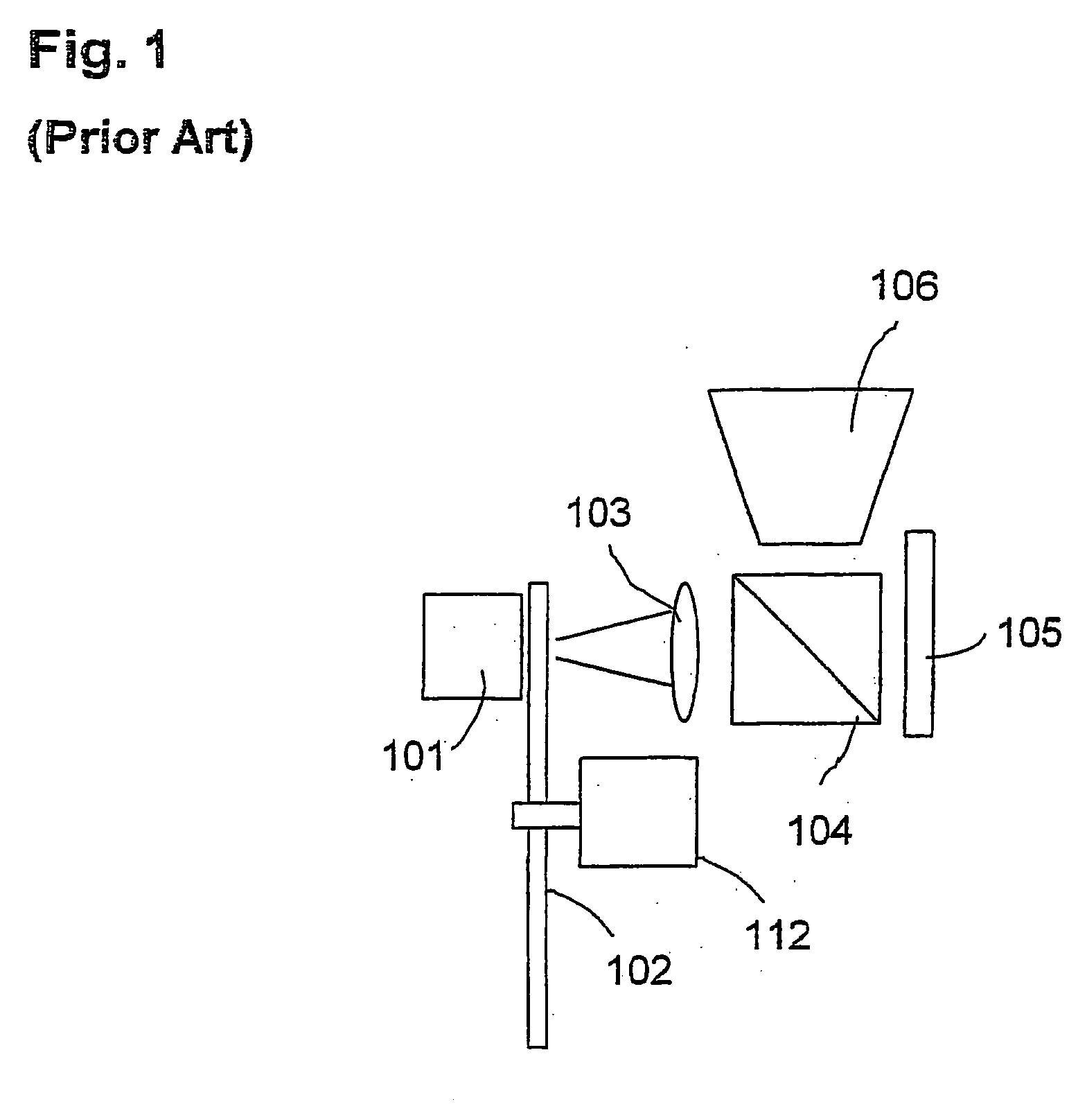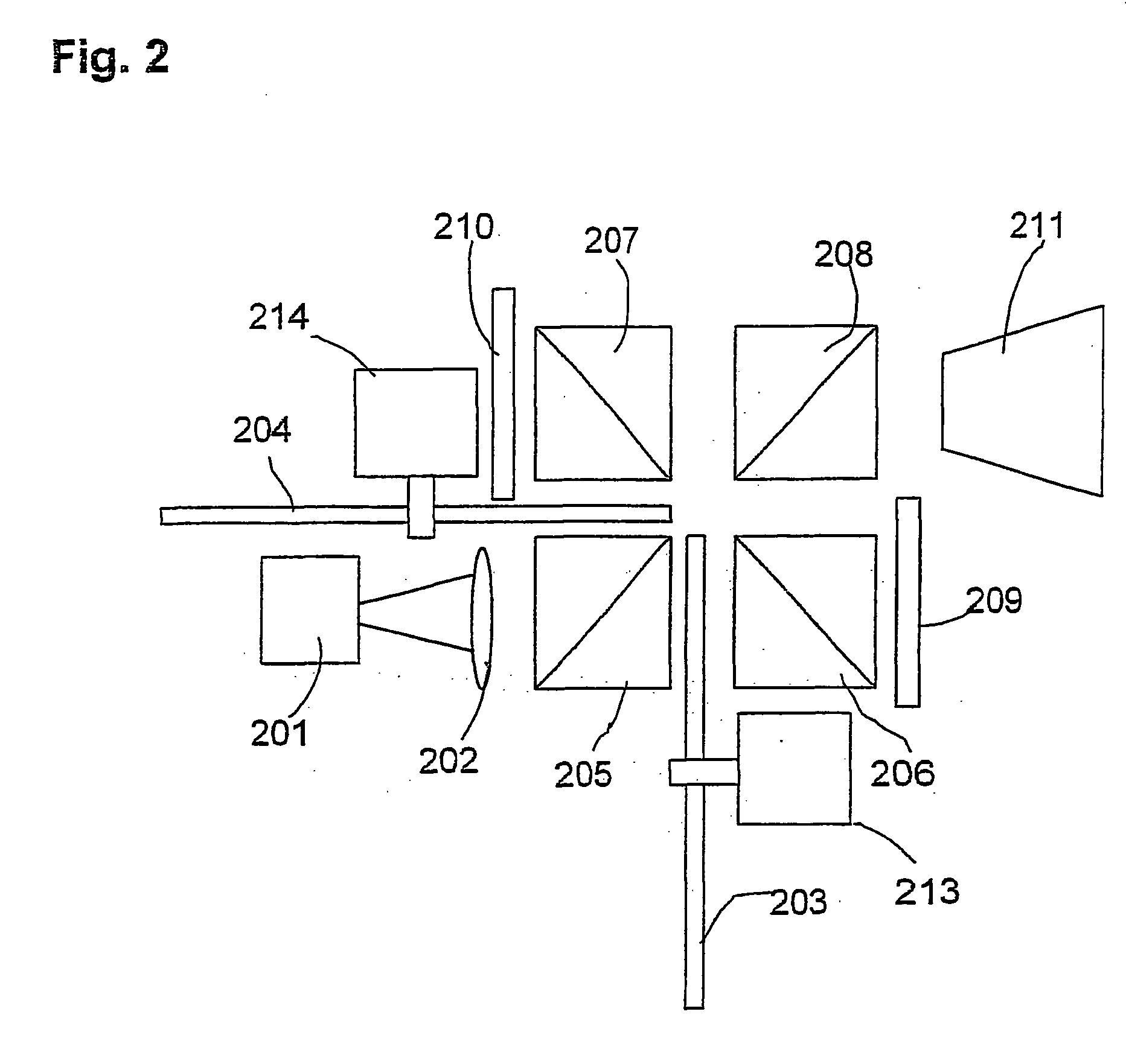Sequential projection color display using multiple imaging panels
a color display and sequential technology, applied in the field of sequential projection color display devices using multiple imaging panels, can solve the problems of inability of monitors to display many colors perceived by humans, inherent loss of “second polarization” light, and power loss reduction, etc., to achieve the effect of improving illumination efficiency
- Summary
- Abstract
- Description
- Claims
- Application Information
AI Technical Summary
Benefits of technology
Problems solved by technology
Method used
Image
Examples
Embodiment Construction
[0036] In the following description, various aspects of the present invention will be described. For purposes of explanation, specific configurations and details are set forth in order to provide a thorough understanding of the present invention. However, it will be apparent to one skilled in the art that the present invention may be practiced without the specific details presented herein. Furthermore, well known features may be omitted or simplified to avoid obscuring the present invention
[0037] Reference is now made to FIG. 2, which schematically illustrates a cross-sectional top view of an optical engine configuration for a more-than-three-primaries color projection display system, using two LCoS SLM panels, in accordance with an embodiment of the invention In this embodiment, non-polarized light from an illumination unit 201, which may include at least one white light source, for example, the UHP™ lamp available from Philips Lighting, a cold filter, and a homogenizing component...
PUM
| Property | Measurement | Unit |
|---|---|---|
| angle | aaaaa | aaaaa |
| off-normal angle | aaaaa | aaaaa |
| wavelength spectrums | aaaaa | aaaaa |
Abstract
Description
Claims
Application Information
 Login to View More
Login to View More - R&D
- Intellectual Property
- Life Sciences
- Materials
- Tech Scout
- Unparalleled Data Quality
- Higher Quality Content
- 60% Fewer Hallucinations
Browse by: Latest US Patents, China's latest patents, Technical Efficacy Thesaurus, Application Domain, Technology Topic, Popular Technical Reports.
© 2025 PatSnap. All rights reserved.Legal|Privacy policy|Modern Slavery Act Transparency Statement|Sitemap|About US| Contact US: help@patsnap.com



